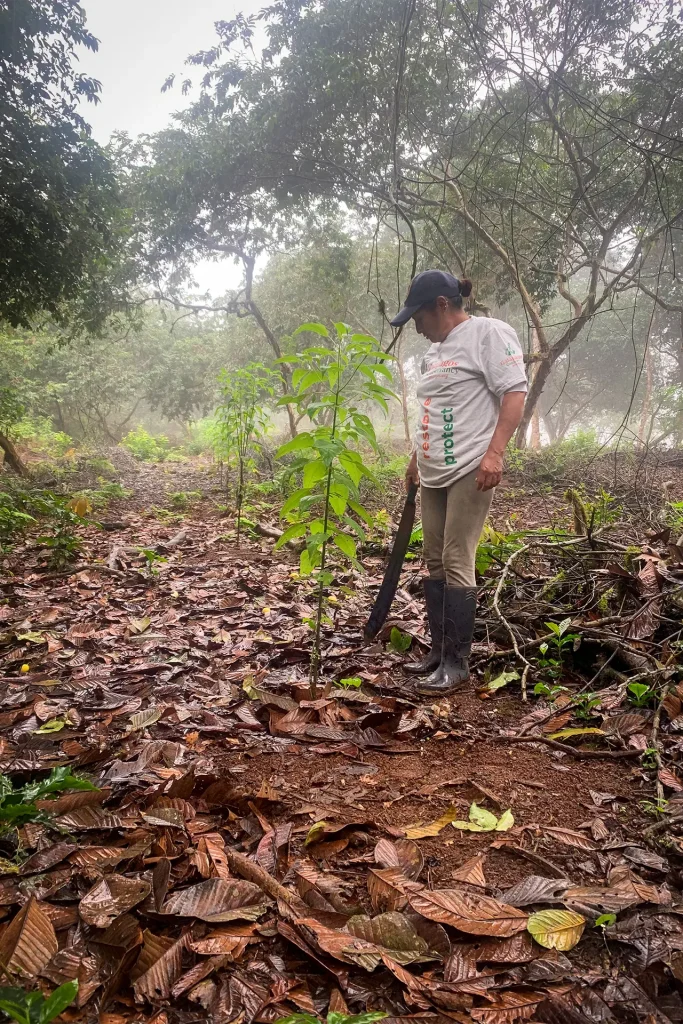Revitalizing San Cristóbal: The Remarkable Benefits of Reviving a Critical Water Source

Water insecurity has always been an issue in the arid, tropical Galápagos Islands and is especially so now in an era of climate change. In response, Galápagos Conservancy is supporting Grace Unda, an entrepreneurial Galápagos resident, through our conservation grants program to restore a freshwater source in the Cerro Gato (“Cat Hill”) area on San Cristóbal Island critical for providing water for human consumption, crop irrigation, and livestock. As Grace explains, “Ensuring the sustainable flow of this water source is crucial for the community health and the long-term protection of local agriculture.”
Grace Unda’s initiative aims to restore and conserve vegetation with exceptional water absorption and retention properties in the Cerro Gato watershed. Her core strategy involves planting a combination of Guadua bamboo along with a species of native and endangered shrub, the Galápagos miconia (Miconia robinsoniana). The Guadua bamboo stabilizes the soil and prevents erosion, while the Miconia enhances the soil’s water retention capacity.
Additionally, Grace has received support and guidance from the Galápagos National Park Directorate, which has donated plants of native species in addition to the Galápagos miconia, including white wild coffee (Psychotria rufipes), Scalesia tree (Scalesia pedunculata), , and Galápagos guava (Psidium galapageium). These plants play an important role in local ecosystems by providing food and shelter for wildlife in Galápagos. These strategic plantings help strengthen plant cover, restore native plants, and re-establish the hydrological cycle, ensuring the long-term sustainability of water resources in this area. Planting them also restores habitats, and fosters the growth of new forests, contributing to climate change mitigation.
The restoration of this key, local freshwater source on San Cristóbal Island is a prime example of how collaboration between institutions and communities can provide effective solutions to environmental challenges. Dr. Jorge Carrión, our Director of Conservation, emphasizes that community involvement is key to ensuring the sustainability of conservation projects in the Galápagos. “By empowering the local community, we are building a more promising future for the archipelago and the world, promoting a development model that balances economic, social, and environmental needs,” he says.

This project is a testament to what can be achieved when communities and organizations unite with a common goal: to preserve the unique and invaluable ecosystems of the Galápagos Islands and the services they provide to residents.




